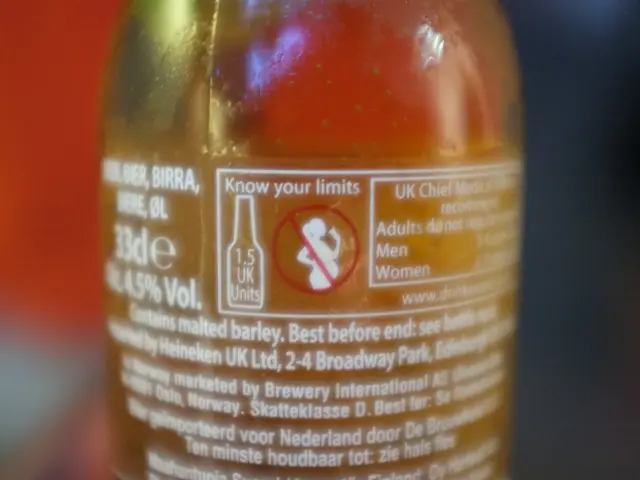Increased European Union Financing Necessary, According to Deputy Minister Glebovas, to Boost European Rail Competitiveness and Enhance Military Mobility
Riding the Rails Across Europe
Europe is gearing up to supercharge its railways, with a focus on beefing up infrastructure and promoting a seamless travel experience. The man behind this vision, Lithuanian Deputy Minister of Transport and Communications Julijus Glebovas, recently took center stage at an international conference in Wrocław, Poland, highlighting the need for investment in railways for both military and economic reasons.
"Railways are key players in national defence and security," says Deputy Minister Glebovas, "They efficiently transport military cargo and facilitate the movement of people and goods, fueling economic growth. It's essential to fortify and modernize dual-use infrastructure—encompassing railways, roads, seas, and airports—to cater to both civil and military needs."
A crucial aspect of this vision is the expansion of a single intermodal ticket system throughout the EU. According to Deputy Minister Glebovas, this initiative would encourage sustainable mobility, simplify travel planning, and boost rail's competitiveness against air and road transport.
The benefits of a single intermodal ticket system are significant. In terms of sustainability, reduced dependence on private vehicles aligns with the EU's aim for carbon neutrality by 2050. For users, this means fewer headaches planning multi-leg journeys, simpler payment processes, and smoother transfers between trains, buses, and other transit modes. Moreover, standardized systems bring economic efficiencies, lowering operational costs and boosting rail's attractiveness compared to other modes of transport.
While the exact timeline for the implementation of this initiative remains fluid, progress is underway. For instance, the Vy/Flytoget merger in Norway is set to introduce a unified ticketing system by 2028. Similarly, Trenitalia c2c's fully contactless network in the UK has demonstrated the success of frictionless ticketing, with over 250,000 taps recorded in less than two months.
That being said, there are hurdles to overcome. Short-term goals include national pilots like Norway's Vy/Ruter integration and contactless adoption initiatives, such as c2c. EU-wide research programs, like UNIFE's proposed €3 billion rail tech investment, aim to speed up innovations like automated ticketing and cross-border interoperability. Long-term success will rely on harmonized policy frameworks and sustained funding as Europe races to complete the Single European Railway Area (SERA) and Trans-European Transport Network (TEN-T).
Cutting-edge technologies, such as FRMCS/ERTMS and Automatic Train Operation (ATO), will play key roles in this transformation. The successful integration of these technologies will pave the way for real-time ticketing, scheduling, and data exchange, ultimately leading to a cohesive EU-wide system.
While no clear EU-wide deadline has been set, the Draghi Report and Europe's Rail Joint Undertaking emphasize the urgency of completing SERA by 2030–2050. With gradual national rollouts converging over the next decade, it seems the era of smooth and convenient rail travel in Europe is well on its way.
- The modernization and enhancement of railways are central to the European Union's plan to strengthen its transportation infrastructure.
- At a recent conference in Poland, Lithuanian Deputy Minister of Transport and Communications, Julijus Glebovas, advocated for increased investment in railways, recognizing their importance in both military and economic contexts.
- Globally, the Baltica Railway, a vital transport route linking Scandinavia to Eastern Europe, could also reap the benefits of these improvements.
- A significant part of this plan involves the creation of a unified intermodal ticket system across the EU, which promises to enhance sustainability, ease travel planning, and bolster rail's competitiveness in the health-and-wellness, fitness-and-exercise, industry, finance, and technology sectors.
- The partnership between Vy and Flytoget in Norway is set to introduce a unified ticketing system by 2028, demonstrating progress in this endeavor.
- Challenges remain, such as successful national pilots and the boosting of cross-border interoperability, but long-term success relies on harmonized policy frameworks and sustained funding for projects like the Single European Railway Area (SERA) and the Trans-European Transport Network (TEN-T).
- Innovations like FRMCS/ERTMS and Automatic Train Operation (ATO) will play a crucial role in the digitalization and integration of Europe's railways, streamlining real-time ticketing, scheduling, and data exchange for a unified EU-wide system, propelling the region towards a smoother and more convenient rail travel future.








